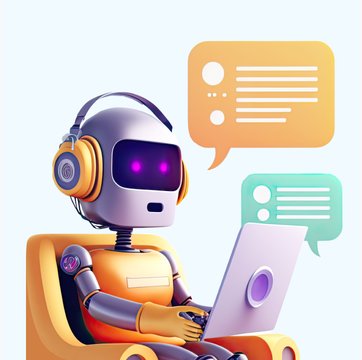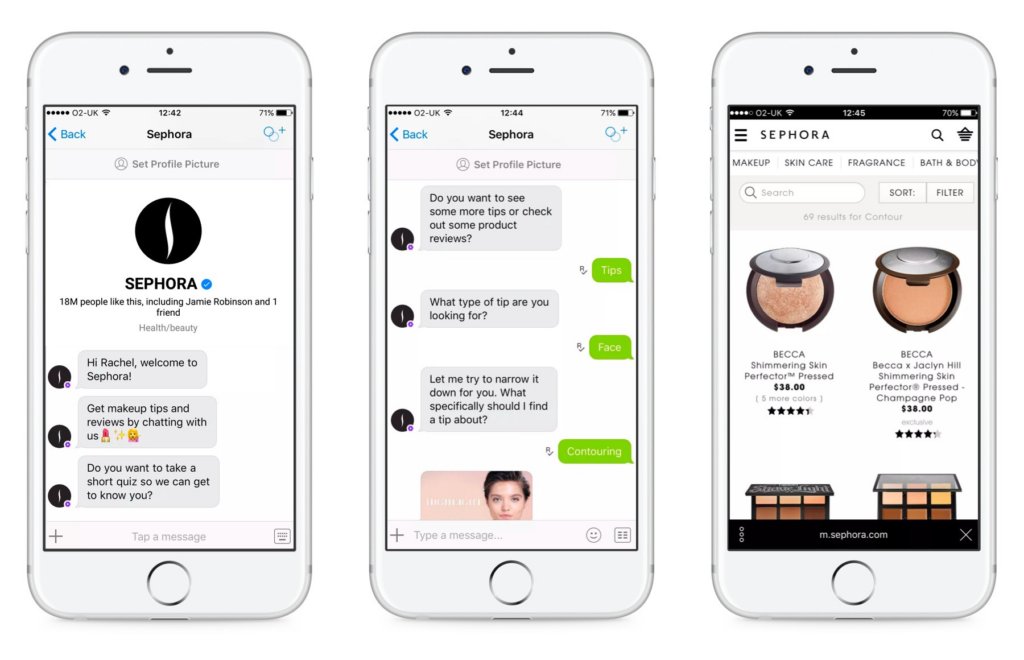Future of Customer Service: How AI and Personalization Are Changing the Game

Table of contents
A recent study by Microsoft revealed that 90% of customers now expect an immediate response when contacting a company. The days of waiting on hold or wading through scripted responses are rapidly fading. Instead, today’s customers want instant solutions, tailored experiences, and seamless interactions across all channels. Customer service isn’t just about answering questions anymore—it’s about providing smooth, intuitive, and proactive experiences that connect with customers across all channels.
As customers are becoming more savvy, their expectations soar. But that’s just the tip of the iceberg. Lately, buzzwords like artificial intelligence (AI),machine learning (ML),and natural language processing (NLP) have entered the conversation. Among these advancements, chatbots have emerged as key players, stepping right into the heart of customer support.
It’s hard not to get excited about how they’re reshaping our interactions with businesses! In this article, we will look into the future of customer service and its evolving trends. Whether you’re a customer service manager or a curious observer, this glimpse into what lies ahead will help you understand why adapting to these changes is more important than ever.
Table of Contents
- The Evolving Trends in Customer Service
- Key Capabilities Shaping the Future of Customer Service
- Future Outlook of Customer Service
- How can Hiver help power up your customer service engine?
The Evolving Trends in Customer Service
Picture this: A client messages you via your live chat widget on your website. No one from your team is available at that moment. When your team is back online, they effortlessly respond to the query via email, keeping the conversation flowing smoothly. This seamless experience is made possible by an omnichannel approach that allows live chats, chatbots, email, and messaging apps to work in harmony. With the added power of AI, your customer support team can ensure that no context is ever lost.
The call center AI market is projected to reach $6 billion by 2032. As technology continues to evolve, many organizations are starting to incorporate self-service options into their customer service strategies, allowing AI to handle routine tasks. This shift can lead to increased productivity, less strain on staff, and lower turnover rates for agents—all benefits that smart business leaders can capitalize on. Let us closely look at some of these evolving trends:
#1. AI and automation
The rise of AI and automation is transforming customer service, making interactions faster, smarter, and more efficient.
One of the most notable trends in the evolution journey is the increased use of chatbots and virtual assistants. Companies like H&M and Sephora use AI-driven chatbots to handle basic queries, from order tracking to product recommendations. These bots are available 24/7, reducing wait times and helping customers instantly without needing human support for every interaction.

AI isn’t just about responding to queries—it’s also about creating personalized experiences.
Through AI-driven predictive analytics, businesses can anticipate customer needs based on their past behavior. It saves time and boosts customer satisfaction by offering personalized, relevant help.
#2. Self-service solutions
Today’s consumers prefer to solve issues on their own before reaching out for help. This trend has driven the growth of self-service solutions like knowledge bases, FAQs, and community forums.
Also, being supported by round-the-clock services, makes customer journeys mark milestones for retention and satisfaction. As per Hiver’s Customer Service Benchmark Report of 2021, 76% of companies offer support outside traditional business hours. Microsoft, for example, provides a comprehensive knowledge base where users can troubleshoot issues with their knowledge base.
These resources empower customers to find answers at their convenience, making support more accessible.
#3. Proactive customer engagement
Gone are the days of only responding to customer issues after they occur. One of the biggest trends in customer service is proactive customer engagement, where companies anticipate customer needs and address potential problems before they escalate. This is made possible through data analysis and machine learning.
For instance, UPS uses proactive alerts to notify customers of possible delivery delays due to weather conditions, allowing them to adjust plans accordingly.
Companies are also using proactive engagement to improve overall customer satisfaction. Take Spotify, which sends personalized notifications about upcoming subscription renewals, ensuring users aren’t caught off guard.
#4. Human-centric service
While automation is on the rise, there’s still a growing emphasis on the human side of customer service. Our research showed a 59% preference for human- led customer support strategy. Empathy, active listening, and emotional intelligence are becoming key components in delivering exceptional support.
Customers don’t just want answers; they want to be heard. There’s a balance to be struck between automation and the human touch, particularly for more complex issues. Many businesses are now blending both approaches, ensuring customers receive human-centric service when it matters most, while also benefiting from AI-driven efficiencies.
Key Capabilities Shaping the Future of Customer Service
The future of customer service is rapidly evolving, driven by advanced technologies that are changing the way businesses interact with their customers. As customer expectations continue to rise, companies are leveraging tools like AI, personalization engines, and voice technology to provide more efficient, personalized, and seamless experiences.
Let’s explore some of the key capabilities shaping the future of customer service and how these trends will impact the industry.
AI-powered chatbots
AI-powered chatbots are no longer the boring, scripted tools they once were. Thanks to advancements in natural language processing (NLP),these bots can now engage in meaningful, human-like conversations. NLP allows chatbots to understand the nuances of customer queries, pick up on context, and provide more accurate and relevant responses.
For example, when a customer asks a chatbot for help with a product, the AI can interpret the question, clarify any ambiguity, and offer personalized recommendations or solutions. This creates a smoother, more natural interaction.

One of the major advantages of AI-powered chatbots is their 24/7 availability. Take H&M’s virtual assistant, for instance. It can help customers track their orders, provide style suggestions, and assist with returns at any time of the day, improving overall customer satisfaction and reducing wait times.
Chatbots keep customers engaged and ensure that their issues are addressed promptly, regardless of time zones or business hours.
Customer relationship management (CRM) enhancements
Customer Relationship Management (CRM) systems are becoming more intelligent and dynamic, thanks to AI and machine learning. Additionally, the integration of CRM systems with social media and messaging platforms makes it valuable for businesses.
Leading companies, like Nike, have integrated their CRM systems with these platforms, allowing customer service teams to view a customer’s entire interaction history—no matter where the conversation started. This integration ensures that agents can provide consistent and personalized support, making customers feel valued across every touchpoint.
So how does this work? The use of advanced analytics to understand customer behavior better. Businesses can identify patterns and anticipate future needs by analyzing data from previous interactions, purchase history, and customer preferences.
For example, if a customer frequently purchases certain items, a CRM can predict when they might need to reorder and prompt the company to send a personalized recommendation or reminder.
With these enhancements, CRM systems are no longer just data storage tools—they’re becoming smart engines that drive engagement and improve the overall customer experience.
Personalization engines
Personalization is becoming a central pillar of modern customer service, and personalization engines are leading the charge. These systems use AI to deliver tailored recommendations based on past interactions and preferences, ensuring that each customer receives a unique and relevant experience.

For example, when you shop on Amazon, you’re often given product recommendations that align with your previous searches or purchases. This is the work of a personalization engine analyzing your data in real time to offer suggestions that fit your needs.
These engines also enable dynamic content adjustments in real time, meaning that websites and support pages can change based on the specific customer visiting them.
Let’s say a customer has previously requested assistance with a certain product. The next time they visit the support page, the content could automatically adjust to display relevant information or product tutorials based on their history.
This level of personalization not only enhances the customer experience but also makes them feel understood and appreciated. The trend is particularly powerful for industries like e-commerce, where businesses can create a more engaging and interactive shopping experience by tailoring everything, from recommendations to messaging, based on real-time customer data.
Voice and speech support
Voice assistants like Amazon Alexa and Google Assistant are leading the way for voice-driven support systems, allowing customers to perform actions like placing orders, checking account balances, or troubleshooting technical issues—all through simple voice commands.
For more complex issues that require in-depth explanations, businesses are turning to video chat support. It allows customers to connect with agents in real-time, offering a face-to-face experience that enhances communication, particularly for technical problems. Imagine needing help with setting up a new device.
Through video chat, a service representative could visually guide you through the process, making the resolution faster and more effective. Apple already offers video chat for its tech support, where customers can interact directly with a human agent who can visually walk them through troubleshooting steps.
This creates a more personalized experience and builds stronger relationships between businesses and their customers. By offering both voice and video options, companies can cater to various customer preferences, providing a human touch in an increasingly digital world.
Future Outlook of Customer Service
Does this bring you to the thought of what the future of customer service will look like in the next 5-10 years?
One significant trend we’ll see is the rise of predictive customer service. For instance, if a company’s system detects a potential service outage in a customer’s area, an AI-powered system could proactively send out notifications and solutions, preventing the customer from even needing to contact support.
The future of customer service promises to be more AI-driven, with customer service software becoming more predictive, personalized, and seamless. AI will continue to evolve, enabling chatbots and support systems to handle more complex queries with greater accuracy, reducing the need for human intervention while improving customer satisfaction.
Self-service solutions will also expand, with companies investing more in AI-driven knowledge bases and interactive guides that empower customers to solve their own issues.
Augmented Reality (AR) support is another area poised for growth. AR-powered customer service could allow users to point their smartphones at a product and receive real-time troubleshooting help or instructions directly on their screen—no need to call or chat.
Finally, we’ll see a growing focus on ethical AI usage and data privacy. As AI systems become more powerful and data-driven, businesses will need to ensure transparency, avoid biases, and safeguard customer data to maintain trust.
How can Hiver help power up your customer service engine?
The key for businesses will be to stay ahead of these trends, embracing AI and automation while maintaining a focus on personalization and human-centric service.
Hiver’s AI-powered chatbots can provide instant, 24/7 support, while its AI summarizer feature can turn conversations into concise notes. Additionally, it helps businesses deliver support across multiple channels – email, chat, WhatsApp, and voice – from the comfort of their inbox. There’s no need to migrate to a complicated, conventional help desk.

































